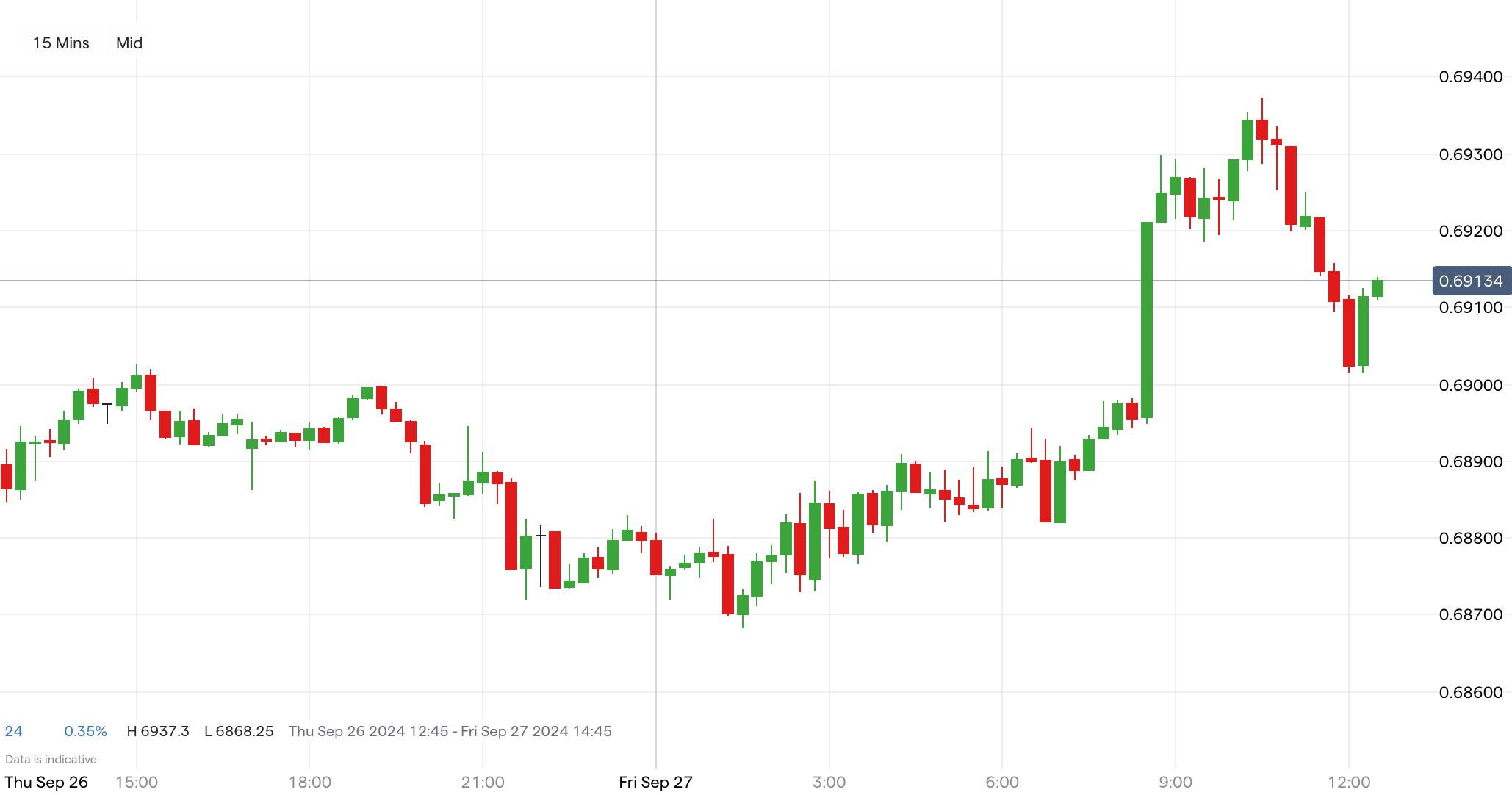Global currency shifts: yen and aussie surge amid US dollar weakness
Discover how global events and economic data are influencing major currencies. Learn why the yen and aussie dollar are surging while the US dollar faces potential downward pressure.

Key points
- US core PCE price index rose 0.1% last month, below the expected 0.2%
- Yen strengthens to 142.564 against the dollar amid Ishiba's appointment
- Australian dollar reaches 0.69373, its strongest in 19 months
- US core PCE prices increased by 2.8% last quarter, down from 3.7%
- Fed's cautious stance supported by slowing inflation data
US core PCE slows to 0.1% supporting Fed’s cautious stance
The US core Personal Consumption Expenditures (PCE) price index rose by 0.1% in the previous month, falling short of market expectations of a 0.2% increase. For context, this number stood at 0.2% in August, suggesting a deceleration in inflation, which bolsters the Federal Reserve’s cautious approach to monetary policy. The highest rate this year was in January at 0.5%. Additionally, core PCE prices grew by 2.8% last quarter compared to the 3.7% rise from the preceding quarter, indicating a potential slowdown in inflationary pressure. This supports the Fed's stance on keeping interest rates stable for now.
Ishiba's prime minister appointment propels yen's rally against dollar
Despite an initial rally, the US dollar weakened against the Japanese yen following the release of weaker-than-expected core PCE data. After plunging to 142.780, the dollar continued to weaken, trading at 142.564 as the yen gained. The yen's strength is credited to the appointment of Shigeru Ishiba as Japan’s next prime minister, which may have led to expectations of political stability and effective economic policies. This political change seems to be a significant factor in the yen's bullish trend against the dollar, highlighting the interconnectedness of political events and currency movements.
USD/JPY price history

Aussie soars amid economic optimism and weaker US dollar
The Australian dollar soared against the US dollar, driven by multiple factors including rising government bond yields and general market optimism fueled by Chinese economic stimuli. This morning, the AUD/USD pair reached highs of 0.69373, nearing a 19-month peak. The Australian dollar, often seen as a proxy for risk and commodity market sentiment, is benefiting not only from domestic economic data but also from broader global economic developments, including a weaker US dollar and positive momentum in commodity markets.
AUD/USD price history

What’s next for the US dollar?
The US dollar may continue to weaken in the near term due to recent economic data and global events. The core PCE price index's modest 0.1% rise reinforces the idea that inflation is slowing, aligning with the Federal Reserve's cautious stance. Lower interest rates could further weaken the dollar. Concurrently, the Japanese yen has strengthened after Shigeru Ishiba's appointment as Japan's prime minister, suggesting possible improvements in Japan’s economic policies. The Australian dollar's robust performance, driven by higher bond yields and Chinese economic optimism, adds further pressure. These combined factors indicate that the US dollar might face continued downward pressure.
How to trade US dollar
- Open an account to get started, or practice on a demo account
- Choose your forex trading platform
- Open, monitor, and close positions on USD pairs
Trading forex requires an account with a forex provider like tastyfx. Many traders also watch major forex pairs like EUR/USD and USD/JPY for potential opportunities based on economic events such as inflation releases or interest rate decisions. Economic events can produce more volatility for forex pairs, which can mean greater potential profits and losses as risks can increase at these times.
You can help develop your forex trading strategies using resources like tastyfx’s YouTube channel. Our curated playlists can help you stay up to date on current markets and understanding key terms. Once your strategy is developed, you can follow the above steps to opening an account and getting started trading forex.
Your profit or loss is calculated according to your full position size. Leverage will magnify both your profits and losses. It’s important to manage your risks carefully as losses can exceed your deposit. Ensure you understand the risks and benefits associated with trading leveraged products before you start trading with them. Trade using money you’re comfortable losing.
